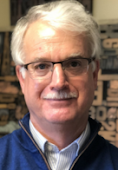The program for the National Summit on Journalism in Rural America, July 7 in Lexington, Ky., and online, includes some of the latest research on rural journalism; and the experiences of some successful rural publishers and start-ups, both digital and print; philanthropy for rural jouranalism; efforts to change state policies to help local news; and university programs to fill gaps in local news coverage.
The summit will be a hybrid event, but most presenters will appear in person. Registration is free, and required; register here. The summit will be held at the Campbell House Curio Hotel, 10 minutes from the Lexington airport. A block of rooms at $139 per night has been extended to Friday, June 30.
The summit is sponsored by the Institute for Rural Journalism and Community Issues (publisher of The Rural Blog) at the University of Kentucky. Here's a closer look at the program:
The state of rural newspapers and the rise of ghost newspapers: Zachary Metzger, Northwestern University, will report on the latest data in the Medill School's continuing State of Local News study.
Rural publishers’ and readers’ views of alternate-revenue models: Nick Mathews, University of Missouri, will report on a study he did with Teri Finneman of the University of Kansas and Pat Ferrucci of the University of Colorado, which included an ongoing intervention with rural papers.
What it's like to be the subject in an alternate-revenue research experiment: Joey Young of Kansas Publishing Ventures, partner in the interventional research, will give his perspective on the study.
What rural publishers think about the future: Ross McDuffie, chief portfolio officer of the National Trust for Local News, will report on a survey of rural publishers that is now in the field.
Finding alternative-revenue success at a twice-weekly: David Woronoff, publisher of The Pilot in Southern Pines, N.C., will explain how his newspaper has broadened its revenue base.
Finding alternative-revenue success at a small daily: Jack Rooney, The Keene Sentinel, Keene, N.H., will do likewise, following up on the Sentinel's presentation at last year's summit.
Reviving Gannett ghosts: Jeremy Gulban, CEO of CherryRoad Media, owner of many former Gannett Co. papers, discusses the difficulty of reviving rural newspapers that lost most of their circulation and revenue under ownership of the nation's largest chain.
Rural journalism as a community builder: Bonita Robertson-Hardy, co-executive director, of the Aspen Institute Community Strategies Group, will discuss how accurate narratives, including high-quality journalism, help build trust and advance equitable rural prosperity.
Philanthropy for local news: Duc Luu, a jouralism officer at the Knight Foundation, moderates a panel with Richard Young of CivicLex, a local digital startup that focuses on local government and civil society; and Lillian Ruiz of Ci-X Strategies, which helps develop thriving public squares that communicate harmony, resilience and cohesion.
Broader rural news: Tim Marema, editor of The Daily Yonder, and Alana Rocha, editor of the Institite for Nonprofit News’s Rural News Network, will discuss how their online platforms bring a focus to broader rural issues and topics by exploring local examples.
Solutions journalism: Mary Steurer, government reporter for the Casper Star-Tribune, will discuss will for solutions-journalism reporting projects and beats in rural news deserts that have few existing resources. as well as ideas on how solutions journalism can be used to build trust in rural communities. Also participating: Melissa Cassutt, rural media manager of the Solutions Journalism Network.
Turning readers into correspondents and reporters: Lindsey Young of Kansas Publishing Ventures will discuss "Earn Your Press Pass," a program that she developed and is being used by state newspaper associations to help newspapers members fill gaps in local reporting.
Digital start-ups going against chain-owned small dailies: The experiences of Lynne Campbell of the Community News Brief in Macomb, Ill.; Jennifer P. Brown of the Hoptown Chronicle in Hopkinsville, Ky.; Debra Tobin of the Logan-Hocking Times in Logan, Ohio; and Nicole DeCriscio Bowe, who is just starting The Owen News in Spencer, Ind.
Seeking state policies to help local journalism: Anna Brugmann, director of policy at the Rebuild Local News Coalition, will discuss how it has turned its attention to state governments, and report on some legislative successes, including a tax break in Washington state and California House passage of a bill that would require tech platforms to give publishers money to hire journalists.
Retreating to Facebook: What do you do when you publish one of the best small weeklies in America but have reached a turnign point in life and have to give up printing your newspaper? Laurie Ezzell Brown of The Canadian Record in Texas and Ryan Craig of the Todd County Standard in Kentucky talked about how they still report on Facebook, and Craig reports on his growing audience.
Bringing students into communities to report local news: Richard Watts of the Center for Community News at the University of Vermont moderates a panel with Alan Miller of Denison University in central Ohio and Christopher Drew of Louisiana State University.
Maintaining and growing print circulation: Patrick Schless of the Lewis County Press's Community Journalism Project says, "Strengthening community
newspapers starts with print first; it is what the staff believe in,
what the current subscribers know, and what the small-town advertisers
understand." He's working with 70 rural
papers to strengthen print product while building a bridge to a hybrid future.
Where do we go from here? Concluding roundtable, moderated by Benjy Hamm, incoming director of the Institute for Rural Journalism and Community Issues.
The day will conclude with a cash-bar reception and optional dinner, which carries a $50 fee. The rest of the day is free of charge, thanks to the Institute and its parent units: the UK School of Journalism and Media and the College of Communication and Information.






















